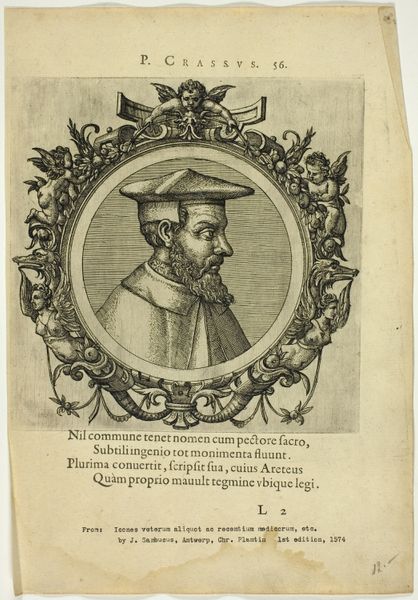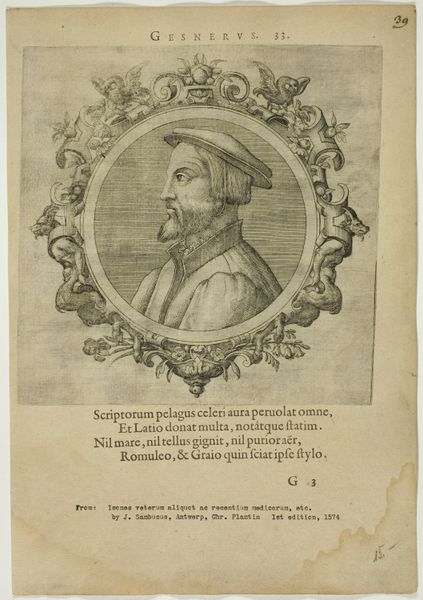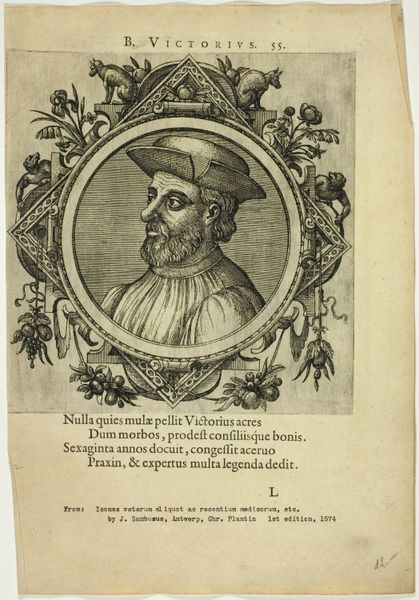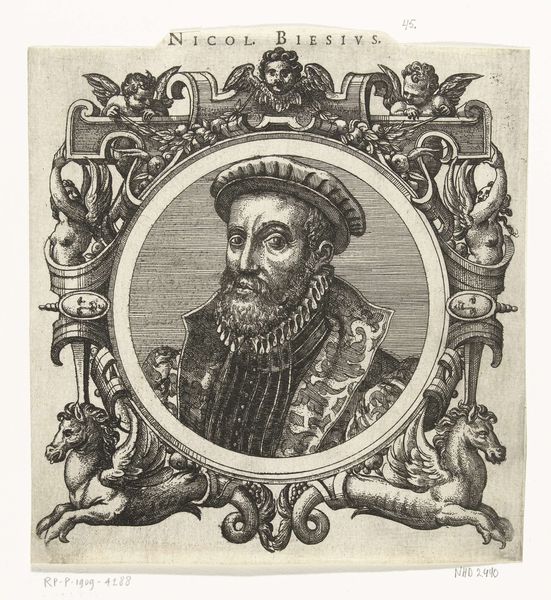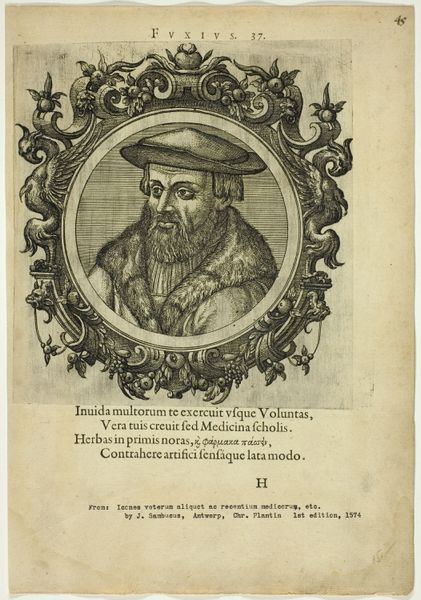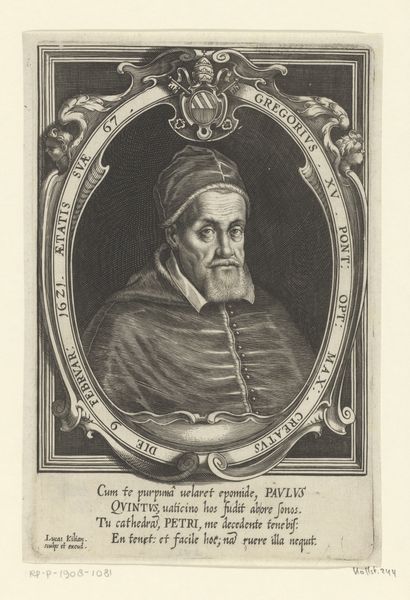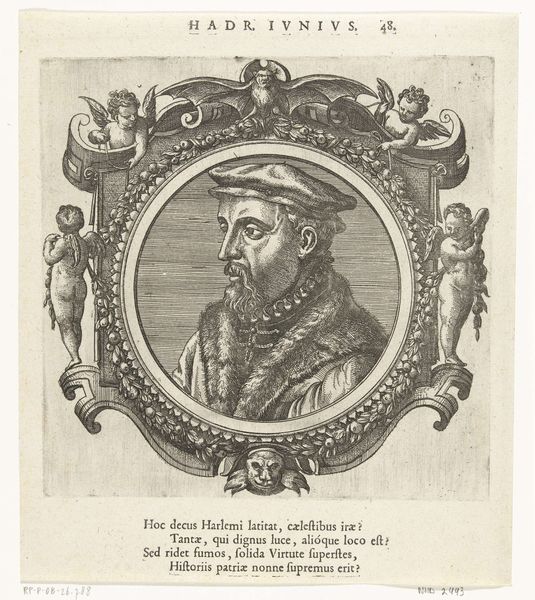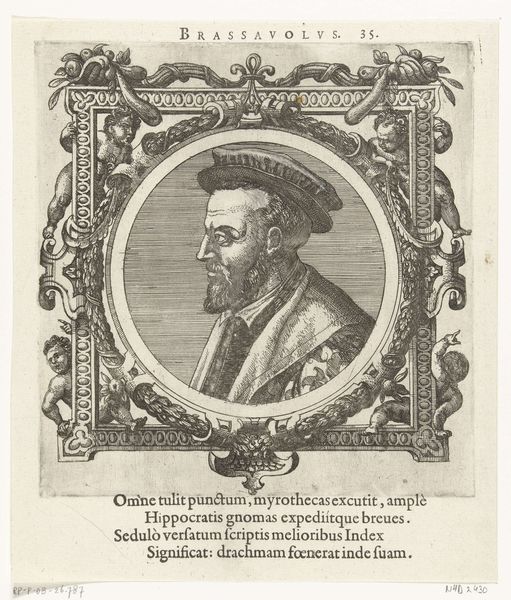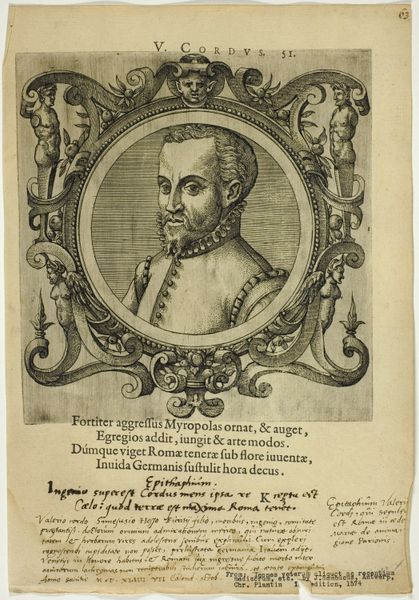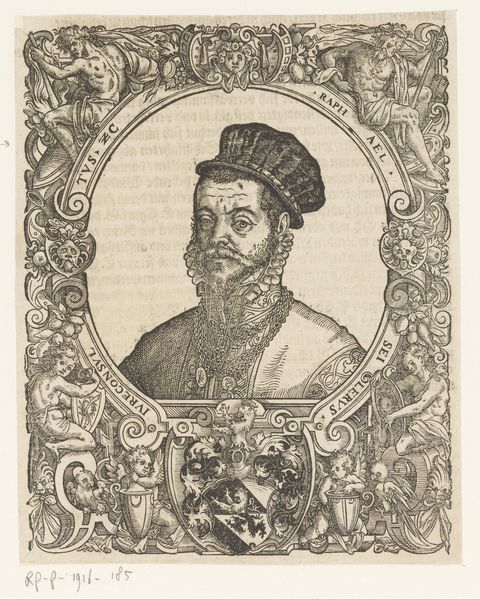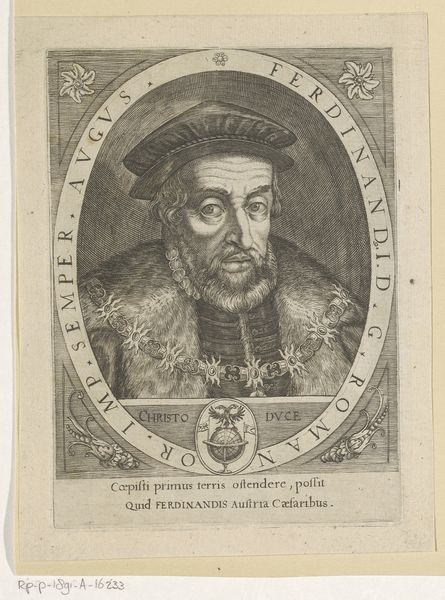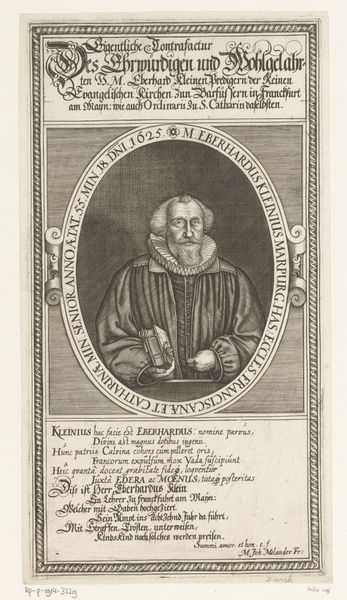
drawing, print, etching, paper
#
portrait
#
drawing
# print
#
etching
#
paper
#
11_renaissance
Dimensions: 199 × 188 mm (image/plate); 312 × 216 mm (sheet)
Copyright: Public Domain
Curator: Before us is "Portrait of Nicolaus Biesius," a print potentially from 1574. It's attributed to Johannes Sambucus, executed as an etching on paper. The Art Institute of Chicago holds this particular impression. Editor: It feels...formal, doesn't it? That intense gaze paired with all that intricate framing! There's something almost unsettling about the level of detail for something that seems so austere. Curator: Indeed. Let’s examine the composition. Biesius is presented within an elaborate, circular frame adorned with winged cherubs and fantastic equine creatures. This frame, rather than merely bordering the portrait, serves to elevate Biesius. Note the texture created by the etching, mimicking engraving to establish tone and definition. Editor: Those winged horses… they’re really working for me. They feel almost surreal, a fantastical break in what could’ve been a very straightforward Renaissance portrait. They give it some dynamism! And all the ornamental additions contrast oddly with the fairly… reserved expression on Nicolaus’ face. Curator: The frame contains visual allegories worth exploring. Cherubs have represented divine inspiration or celestial benediction, signifying knowledge and creative inspiration. The winged steeds can denote fame and speed of thought, or, if associated with Neptune, they signify journeys or change. All strategically placed to enhance and embellish the subject’s image. Editor: He must have been very important to merit all of this embellishment. Like, "important enough for flying horse guardians" kind of important. Was he some kind of patron of the arts himself? Curator: Historical texts mention Nicolaus Biesius as a celebrated physician and scholar. This likely explains the Latin inscription that surrounds the print: "Fontibus hic puris haurit, quae scribit, et annis tot celebri docuit nomine Louanii"—essentially, "From these pure fountains he draws what he writes, and for so many years he has taught with renowned name in Leuven." He was even physician to Emperor Maximillian. Editor: Ah! So the embellishments make perfect sense; they were a carefully crafted package, selling a very specific image. Thinking of him, now, as an individual—it changes everything, adds such a layer to seeing this. I thought he was all authority, no heart! Curator: The artist successfully imbued this print with multiple layers of meaning, creating a visual record rich with historical and symbolic weight. Editor: What a beautiful synthesis of meticulous craftsmanship and historical context! These fleeting connections with people centuries away--that is what makes art endlessly intriguing.
Comments
No comments
Be the first to comment and join the conversation on the ultimate creative platform.
